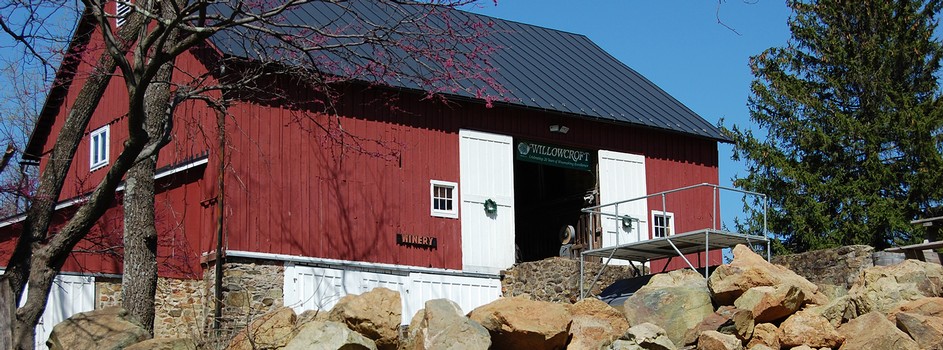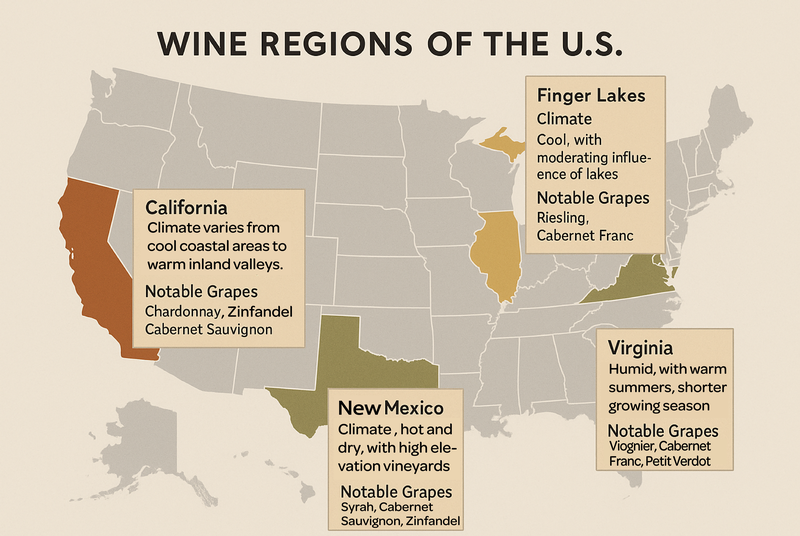How Climate Shapes the Wines We Love: A Look at Four Unique Regions
If you’ve ever wondered why a Chardonnay from California tastes so different from one grown in Virginia or New York’s Finger Lakes, the answer often lies in one word: CLIMATE.
From the first bud break in spring to the final harvest in fall, a wine region's climate profoundly shapes the grapes it grows and the wine it ultimately produces. Understanding how climate influences wine is a fascinating way to deepen your appreciation for each glass.
- Warm climates promote faster ripening, leading to grapes with higher sugar content and lower acidity and typically more intense, full-bodied wines with higher alcohol and lush, ripe fruit flavors.
- Cool climates slow the ripening process, resulting in grapes with higher acidity and lower sugar and wines that are lighter, brighter, and often more nuanced.
But there’s more to climate than just temperature. Let’s explore some other key factors—and how they play out in a few distinct U.S. wine regions, including our home here in Virginia.
Sunlight is essential to photosynthesis and sugar development in grapes, but balance is key.
- Too little sun? Grapes may not fully ripen.
- Too much? Sunburned fruit and imbalanced wines.
Virginia's warm summer days and cool mountain nights give us the perfect mix, particularly atop the Catoctin Ridge where our vineyards are perched. That diurnal shift preserves acidity and builds complexity in grapes like Cabernet Franc and Albarino.
California, particularly in Napa or Paso Robles, experiences more intense, consistent heat and sun. This translates to wines with bolder body, ripe fruit flavors, and typically higher alcohol levels—think classic California Cabernet Sauvignon or Zinfandel.
Rain and humidity can make or break a vintage.
- Too much rainfall close to harvest? Grapes swell and lose concentration.
- High humidity increases disease risk, especially for tightly clustered grapes like Riesling or Chardonnay.
The Finger Lakes region in New York experiences a short growing season and cooler, often wetter conditions. But the lakes themselves help moderate the climate, making the area ideal for high-acid, aromatic whites like Riesling and Gewürztraminer.
New Mexico, where we’ve recently partnered for special tastings, is a high-elevation, semi-arid wine region. With ample sunshine and low humidity, grapes ripen well while maintaining freshness, particularly important for varietals like Syrah, Tempranillo, and sparkling wine grapes.
As global temperatures rise, winemakers around the world are being challenged to adapt:
- Earlier ripening can mean unbalanced sugar and acid levels.
- Shifts in suitability lead to new wine regions emerging, while traditional ones are being pushed to evolve.
At Willowcroft Farm Vineyards, we stay informed and nimble, choosing disease-resistant rootstocks, using canopy management to optimize sun exposure, and continually evaluating what grows best in our changing climate. Our recent addition of Albarino is one such adaptation—and it’s been a thrilling success.
From the rolling hills of Virginia to the dry elevations of New Mexico, the sun-soaked vineyards of California, and the cool, lake-influenced slopes of New York, climate gives every region its signature. For wine lovers, understanding these differences isn’t just educational—it’s delicious.
So next time you swirl a glass, consider the climate story behind it. It might just change the way you taste.


